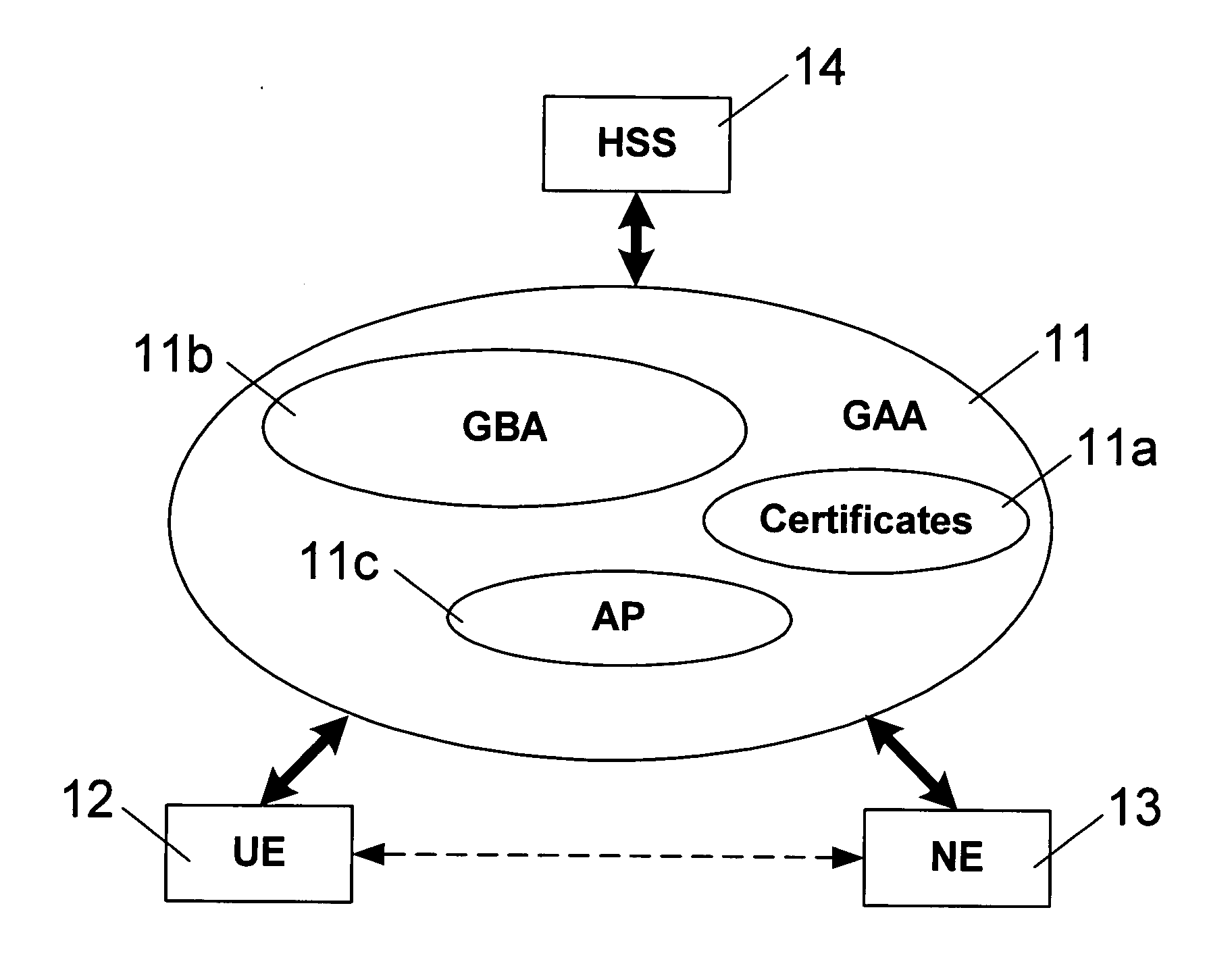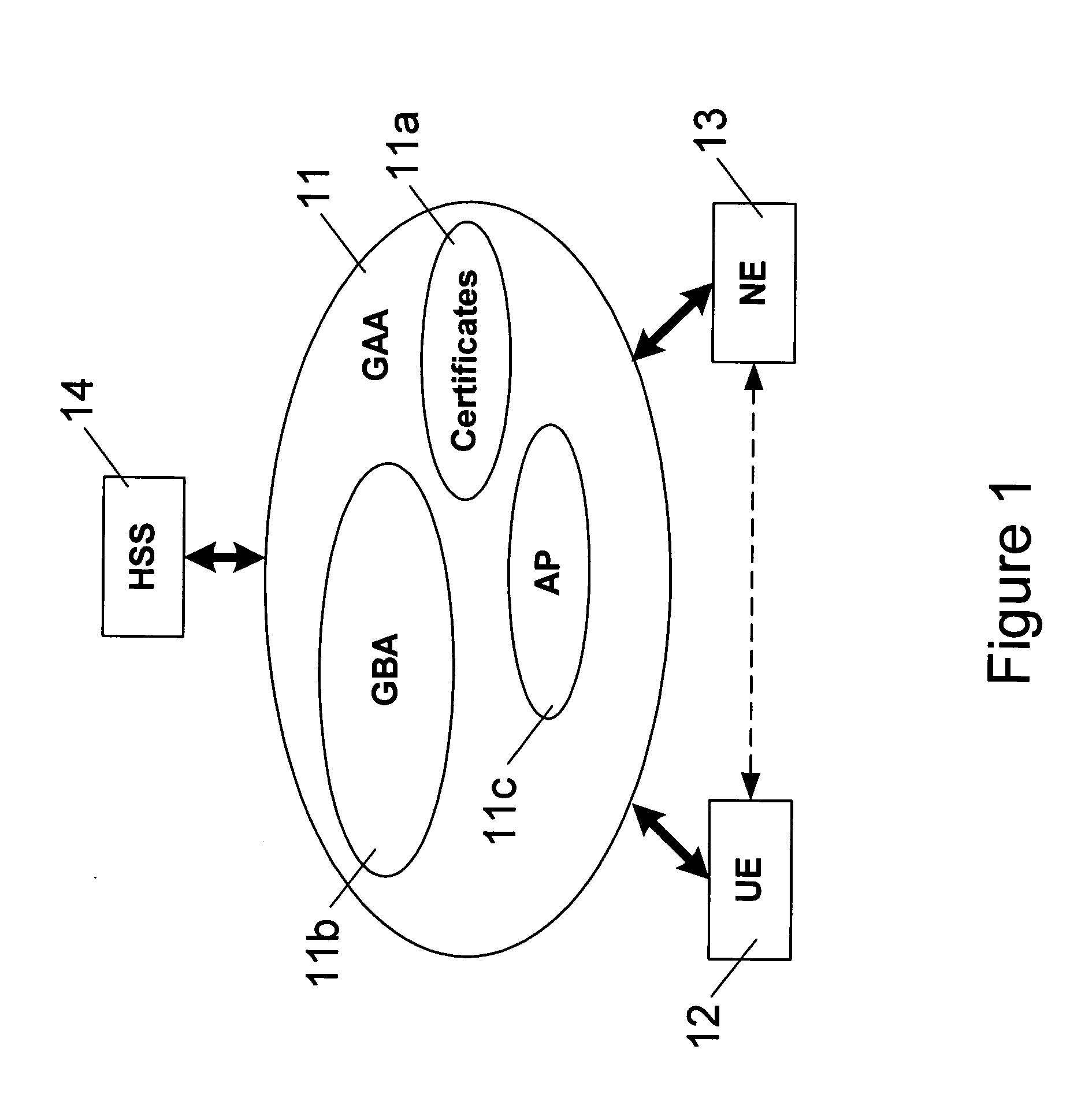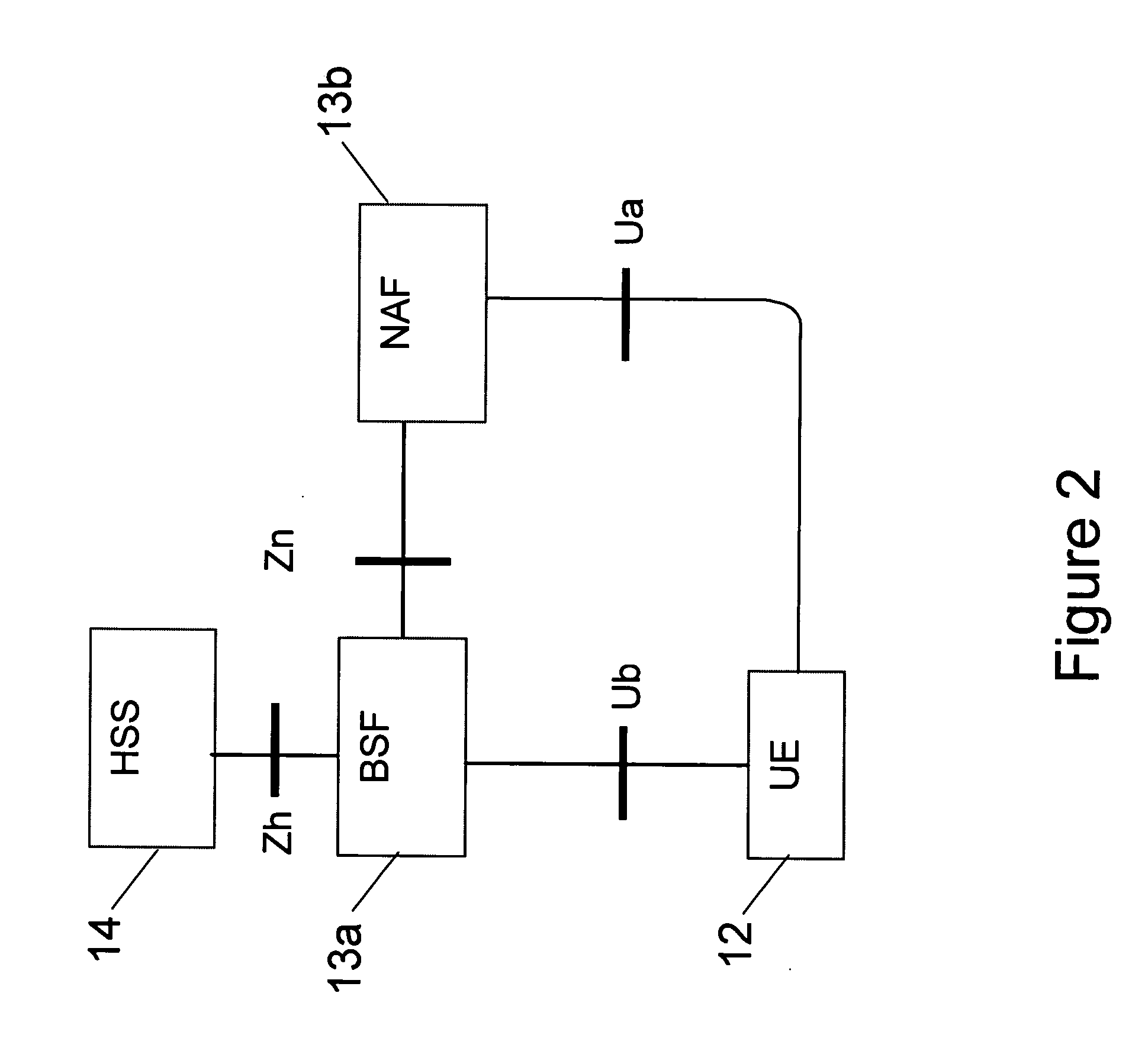Authentication using GAA functionality for unidirectional network connections
a network connection and functionality technology, applied in the direction of user identity/authority verification, digital transmission, securing communication, etc., can solve the problems of inability to use authentication, inability to overcome problems, and inability to use conventional gaa and/or gba mechanisms to work
- Summary
- Abstract
- Description
- Claims
- Application Information
AI Technical Summary
Benefits of technology
Problems solved by technology
Method used
Image
Examples
first embodiment
[0094]FIG. 5 illustrates a signaling diagram of a method according to the present invention. FIG. 5 depicts a scenario where the client entity or user equipment UE 12 has no return channel to the network, i.e. the client entity is not able to communicate with both the network application function (NAF) entity 13b and the bootstrapping server function (BSF) entity 13a in a bidirectional manner. Thus, the client entity cannot perform a bootstrapping procedure with the BSF entity. An example for such a scenario may be a set-top box (STB; or digibox) which is equipped with a UICC (Universal Integrated Circuits Card) card reader.
[0095] A method for performing authentication between the client entity and the network so as to utilize GAA functionalities is described below.
[0096] In step S51, the NAF entity 13b needs to deliver some data (e.g., broadcast keys) to the client UE 12. The NAF entity 13b knows the private identity of the subscriber, i.e. the subscriber's IMPI (IP Multimedia cor...
second embodiment
[0102]FIG. 6 illustrates a signaling diagram of a method according to the present invention. There is again depicted a scenario where the client entity UE 12 has no return channel to the network, and thus cannot perform a bootstrapping procedure directly with the BSF 13a entity. Rather, the bootstrapping takes place with the aid of a NAF entity. Hence, such a procedure may be referred to as reverse bootstrapping.
[0103] A reverse bootstrapping procedure according to the present embodiment takes place between the client entity UE 12 and the bootstrapping server function entity BSF 13a via a network application function entity NAF 13b. The procedure is described below.
[0104] In step S61, the NAF entity 13b needs to deliver some data (e.g., broadcast keys) to the client UE 12. The NAF entity 13b knows the identity of the subscriber, i.e. the subscriber's IMPI (see above), and the data that need to be delivered to the UE 12. According to conventional procedures, the UE 12 has always a c...
third embodiment
[0113]FIG. 7 illustrates a signaling diagram of a further method according to the present invention. There is depicted a scenario where the client UE 12 has no return channel to the NAF entity 13b but does have such a bidirectional connection to other network elements such as the BSF 13a. That is, similar to the above scenarios, the client entity UE 12 is not able to communicate with both of the relevant network elements NAF 13b and BSF 13a in a bidirectional manner. However, in the present case, the client can perform a bootstrapping procedure with the BSF entity 13a. An example for such a scenario may be a mobile terminal that has 3G functionalities, e.g. IP connectivity, but it is also equipped with a facility to receive for example digital video broadcast for handheld terminals, i.e. is DVB-H enabled.
[0114] This scenario assumes that the UE 12 either has a valid bootstrapping session with the BSF 13a all the time (this could be a configuration option in the UE 12), or that the B...
PUM
 Login to View More
Login to View More Abstract
Description
Claims
Application Information
 Login to View More
Login to View More - R&D
- Intellectual Property
- Life Sciences
- Materials
- Tech Scout
- Unparalleled Data Quality
- Higher Quality Content
- 60% Fewer Hallucinations
Browse by: Latest US Patents, China's latest patents, Technical Efficacy Thesaurus, Application Domain, Technology Topic, Popular Technical Reports.
© 2025 PatSnap. All rights reserved.Legal|Privacy policy|Modern Slavery Act Transparency Statement|Sitemap|About US| Contact US: help@patsnap.com



